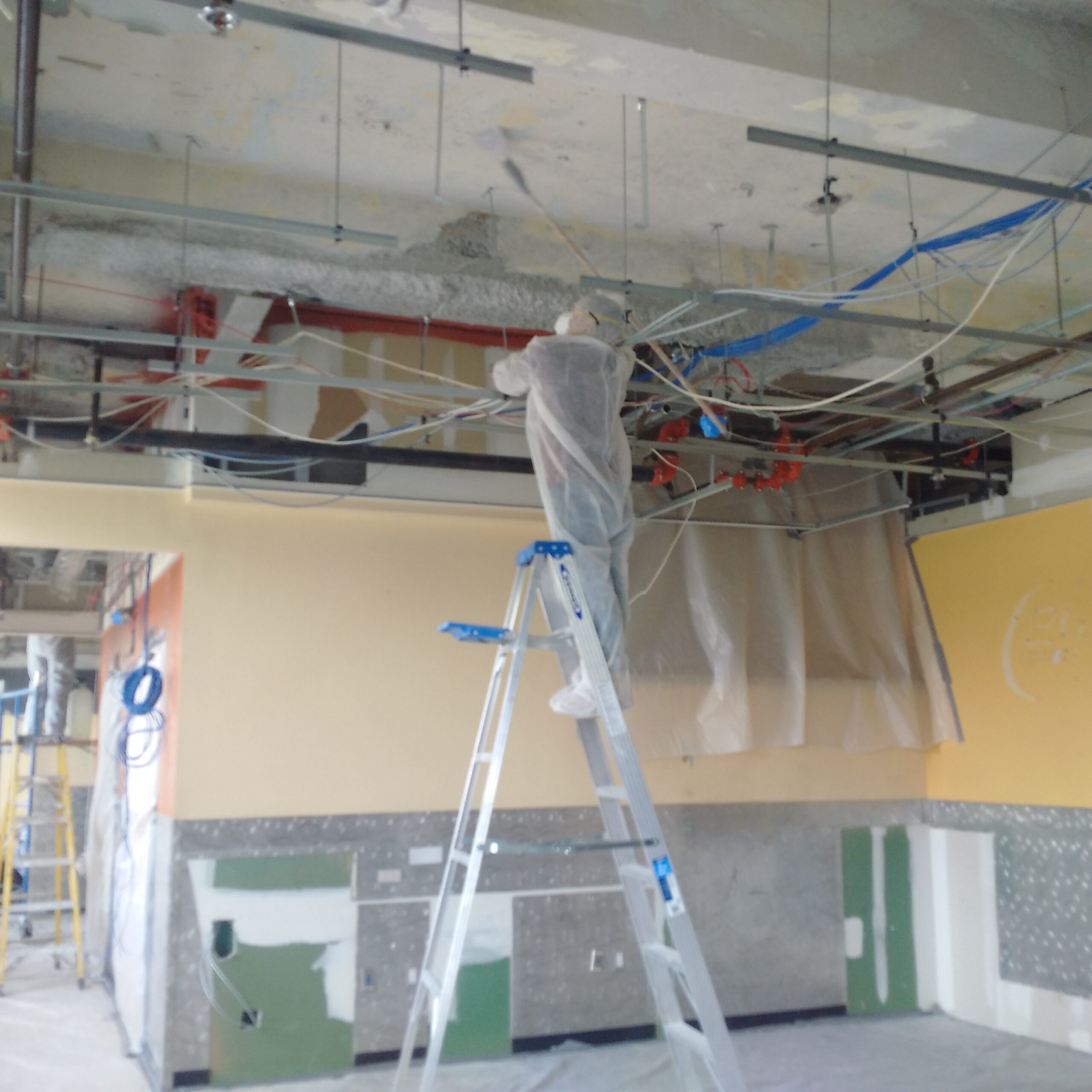Lead Paint Removal Service-- NYC's Trusted Solutions for Lead Security
Lead Paint Removal Service-- NYC's Trusted Solutions for Lead Security
Blog Article
Vital Devices and Methods for Efficient Lead Violation Clean-up
Attending to lead offenses properly requires an extensive approach that mixes the right tools with calculated methods. Simultaneously, the use of specialized cleanup devices, such as HEPA vacuums and lead-specific cleansing agents, is vital for complete impurity removal. Effective containment approaches, consisting of plastic bed linen and unfavorable air pressure systems, are vital to stop the spread of unsafe materials.
Personal Protective Equipment
Individual safety devices (PPE) is a critical part in the reliable monitoring of lead contamination clean-up. PPE serves as an essential barrier, safeguarding employees from the hazardous impacts of lead direct exposure, which can cause extreme health effects. The necessary PPE for lead cleanup includes respirators, protective apparel, handwear covers, and eye security. Each kind of devices is particularly developed to alleviate various dangers connected with lead bits and dirt.
Respirators, especially those geared up with HEPA filters, are indispensable for filtering system airborne lead particles, protecting against breathing. Safety clothes, consisting of coveralls and disposable matches, protects against lead dirt from adhering to employees' garments, lowering the risk of additional contamination.
Moreover, strenuous training on the right use and maintenance of PPE is necessary. Employees should be informed on donning and doffing procedures to stay clear of contamination. Normal inspections and replacements of PPE elements are needed to maintain their safety capabilities, making certain a secure and compliant cleanup procedure.
Specialized Clean-up Devices

One more crucial device is the wet/dry vacuum cleaner, which can efficiently tidy up both dust and fluid contaminants. These vacuum cleaners often include HEPA filters to give an extra layer of safety and security. Damp wipes or tack towels are additionally important for surface area cleansing; they are specifically created to record and hold lead bits, reducing the risk of spreading contamination.
For more persistent down payments, specialized lead-removal cleaner are required. These agents are developed to damage down lead fragments, making them much easier to remove. Scrub brushes with durable bristles can aid in this procedure, particularly on harsh surface areas where lead dust often tends to stick extra highly.
In addition, encapsulants are used to seal lead-contaminated surfaces, preventing the release of lead dust. These specialized paints and coatings are designed to adhere to different substrates, offering a long-lasting remedy for lead containment.
Effective Containment Approaches
Efficient containment methods are critical in alleviating the spread of lead contamination during cleanup tasks. Executing durable control approaches ensures that lead bits do not move to unaffected areas, consequently securing both employees and the environment. One key method is using plastic bed linen to seal polluted zones. Sturdy polyethylene obstacles can be mounted from floor to ceiling to produce a regulated job area, substantially decreasing the threat of air-borne lead dust dispersal.

To improve containment, encapsulants can be put on surfaces that are not being removed or disturbed. These specialized coverings bind lead dust, reducing its availability for resuspension. Additionally, all personnel should use appropriate Individual Protective Tools (PPE), consisting of respirators and disposable fits, to avoid contamination spread.
Safe Disposal Practices
Ensuring safe disposal methods is a vital element in the management of lead contamination clean-up. Correct disposal reduces the danger of lead returning to the setting and threatening public health and wellness. The very first step is to determine and segregate lead-contaminated waste from various other products. Secure control utilizing heavy-duty, leak-proof containers is necessary to stop splilling during transport.
Moving lead waste requires adherence to strict guidelines. Using certified unsafe waste providers guarantees that the products are dealt with sensibly. Paperwork, including materializes describing the type and amount of waste, need to accompany deliveries to track the waste from the website of origin to its last disposal destination.
Designated contaminated materials disposal centers are geared up to take care of lead-contaminated materials securely. These facilities usually utilize sophisticated approaches such as stablizing, solidification, or chemical therapy to counteract the lead prior to disposal. Landfilling in specialized, lined locations that protect against leachate from polluting groundwater is an usual practice for last disposal.
Routine training for site web personnel involved in lead garbage disposal is critical to preserve safety requirements and stop unintentional exposure. By sticking to these practices, companies can considerably lower the ecological and health and wellness effects related to lead contamination.
Regulatory Compliance Tips

Abiding by governing compliance is extremely important in the effective implementation of lead contamination cleaning. Understanding and complying with government, state, you could try this out and regional policies guarantees not just the safety and health and wellness of people but also the legal and economic well-being of the cleaning company. The Environmental Defense Firm (EPA) sets strict criteria, such as the Lead Restoration, Repair Work, and Painting (RRP) Guideline, which mandates correct certification and training for specialists taking care of lead-based tasks.
Compliance starts with a complete analysis of suitable regulations and laws. Organizations needs to stay updated on any legal changes, which can be assisted in through routine training sessions and signing up for sector updates. Paperwork is another essential compliance facet; keeping thorough documents of all tasks, including inspection reports, worker training logs, and disposal shows up, is necessary.
Moreover, involving with accredited lead assessors read here or risk assessors makes sure that lead risks are appropriately determined and reduced. Companies need to enforce using Personal Safety Devices (PPE) and ensure that security protocols are strictly followed. Clear communication with stakeholders, including staff members, clients, and regulative bodies, will certainly promote a society of compliance and liability, eventually contributing to a safer and much more reliable lead cleaning procedure.
Verdict
Efficient lead violation cleaning demands the assimilation of specialized devices and strategic approaches to make sure safety and effectiveness. Individual protective tools (PPE) safeguards workers from direct exposure, while safe disposal methods and rigorous adherence to regulative conformity are essential for responsibly handling unsafe waste.
Report this page